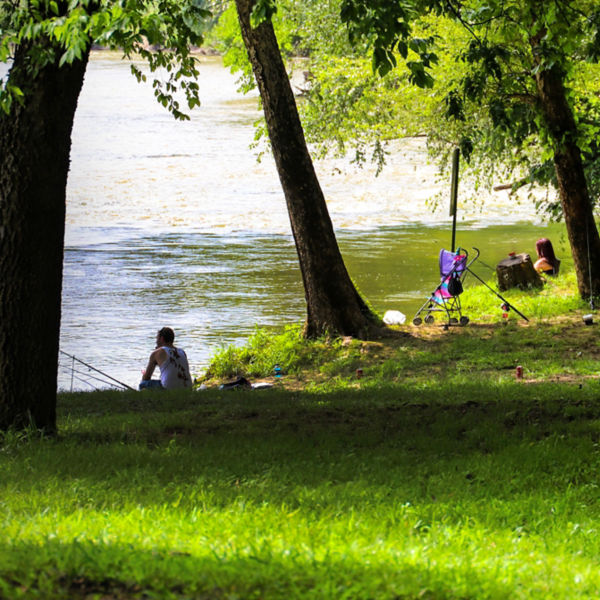
Tallulah Gorge is quite the ditch. The Tallulah River carves a dramatic canyon that runs for nearly 2 miles and reaches almost 1,000 feet deep as it makes its way through the rolling mountains of North Georgia (traditional lands of the Cherokee people). Inside that gorge is some of the most tumultuous whitewater and rugged terrain in the state. A century ago, tightrope walkers tested themselves by walking across the canyon. In more recent years, whitewater kayakers and rafters have set their sights on the Class V rapids deep within the quartzite-granite bedrock belly. Fortunately for the rest of us, Tallulah Gorge isn’t just a draw for daredevils. The 2,739-acre Tallulah Gorge State Park helps make the abrupt geography a bit more accommodating, with more than 20 miles of hiking trails including 14 miles of mountain biking trails, plus a campground that welcomes tent campers and RVers alike. Here’s everything you need to know about visiting this North Georgia gem.
Hiking
To see the best of the gorge, combine the North Rim and South Rim Trails for a 3-mile, round-trip hike on a relatively flat, mulched trail that takes you to multiple overlooks of the canyon. From the North Rim Trail, you can see a couple of the gorge’s most notable waterfalls, as well as the spot that tightrope walker Karl Wallenda walked across the divide. On the South Rim Trail, you can see various rocky outcroppings and waterfalls plummeting into pools at the bottom of the gorge.
If you’re up for a challenge, get a permit from the Interpretive Center and hike the 2.5-mile (round-trip) Gorge Floor Trail, which drops to the bottom of the gorge over a boulder-laden trail before delivering you to sliding rocks (think: natural waterslides) and waterfalls. The park only releases 100 permits a day to hike the trail, so show up early on warm weekends.
Mountain Biking
The mountain biking in the park isn’t as dramatic as the hiking, but there’s plenty of opportunity for beginner and intermediate riders to spin their wheels. From the Interpretive Center, ride the 4.7-mile (one-way) Stone Place Trail, which traces an old roadbed on a gradual descent to Tugaloo Lake. Expect plenty of Georgia red clay peppered with roots and rocks. You can also tack on the 1.5-mile High Bluff Trail, a skinny singletrack that winds through the forest above the gorge. More info: mtbproject.com

































